Quantitative and Evolutionary Ecology of Communities Group
Members
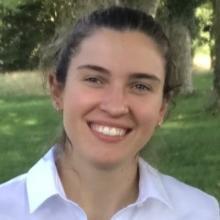
Doctorante
UCBL

Professeure des universités
VetAgro-Sup
Tel: 33 04 72 43 27 56

Directeur de recherche
CNRS
Tel: 33 04 72 43 27 57

Doctorant
UCBL
Tel: 04 72 44 81 42

Doctorant
CNRS
Tel: 04 72 44 81 42
Doctorant
VetAgro-Sup
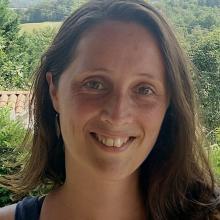
Post-doc
CNRS
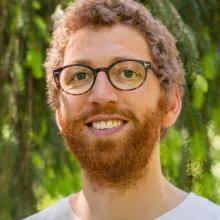
Maître de conférences
UCBL
Tel: 04 72 44 81 42


Professeur des universités
UCBL
Tel: 33 04 72 43 27 56

Professeur des universités
UCBL
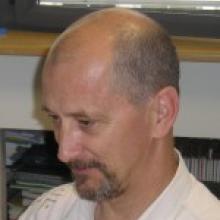
Directeur de recherche
CNRS
Tel: 33 04 72 43 27 56
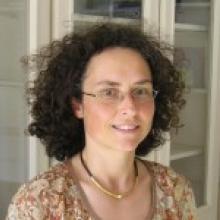
Maîtresse de conférences
UCBL
Tel: 33 04 72 43 29 02
Maître de conférences
UCBL
Tel: 33 04 72 43 29 02

Our research activities, focused on interspecific interactions (community ecology), aim to better understand the ecological and evolutionary processes structuring species assemblages and biodiversity at different temporal and spatial scales. Our team addresses these major issues using contrasting biological models (communities of large African mammals, insects, microbiota, plants) from 3 complementary angles:
- Our work is strongly anchored in the conceptual framework of evolutionary biology by studying (i) the diversity of adaptive responses implemented by organisms to selective pressures in their environment, (ii) their consequences on population demography and ultimately (iii) the dynamics and composition of species communities.
- Our research is closely linked to societal issues of biodiversity conservation and management by integrating both the functioning of socio-ecological systems and the context of climate change. We conduct experimental studies, manage and ensure the long-term monitoring of several community observation networks.
- Methodological issues also occupy a central place in our team, with the development of new tools for statistical processing and modeling of ecological data. This activity leads to the development of methods and software that we develop and distribute freely.
Research programs

Functioning of African savanna communities
The Hwange LTSER (Long-Term Socio-Ecological Research site in Zimbabwe hosts a long-term interdisciplinary research program that focuses on the functioning of plant and animal communities within the Hwange National Park and the interactions between this protected area and humans living in its periphery. Based on this program, three axes are developed: (1) studying the population dynamics of elephants, exploring their impact and that of management policies on the socio-ecosystem functioning; (2) Understanding the extent to which interactions within and between trophic levels are sensitive to management actions (e.g. sport hunting, water management) and climate change; (3) Decoding human ecology and human-wildlife coexistence mechanisms towards integrated conservation and sustainable functioning of the socio-ecosystem. This research is complemented by more recent works in the Hluhluwe-iMfolozi Park and in the Madikwe reserve in South Africa, which focus on the role of environmental conditions on the hunting success of large African carnivores. We work in close collaboration with the IRL (International Research Lab) Rehabs.
Involved group members : Alice Bernard, Laura Lacomme, Aïssa Morin, Lisa Nicvert, Elie Pedarros, Yolan Richard, Marion Valeix*
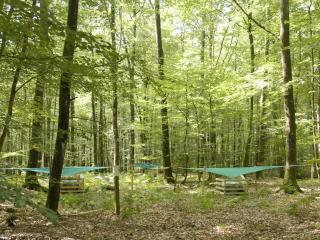
Masting and the community dynamics of seed consumers
Masting is a reproductive strategy often encountered in perennial plants, characterized by fructifications highly fluctuating in time and being synchronized at the population level. The seeds produced that way constitute a pulsed resource with a strong impact on the eco-evolutionary dynamics of seed-consuming communities and forest regeneration. Our lack of knowledge of this system still impedes our understanding of the dynamics of temperate forest ecosystems and its future in the context of climate change. Our work carried out on oak forests aims to better understand (i) the proximal causes of masting, (ii) the mechanisms underlying the coexistence of species competing for such highly fluctuating resource and (iii) the co-evolution of consumer exploitation strategies for the fluctuating resource and forest tree fruiting strategies. On the basis of the results obtained, scenarii will be proposed on the future of forest regeneration under climate change, that may serve forest management.
Involved group members : Marie-Claude Bel-Venner*, Emilie Fleurot, Léa Keurinck, Jean Lobry, Samuel Venner

The spread of antibiotic resistance genes in bacteria
Antibiotic resistance is recognized as one of the greatest current threats to human health, and the mobile genetic elements (MGEs) that circulate in bacterial populations and communities are the main vehicles. To understand the dynamics and diversity of MGEs in bacterial pangenomes and the emergence of antibiotic resistance genes, we propose to go beyond the framework of conventional genomics by considering pangenomes as complex ecological communities. In the Ab-One program, we mobilize the concepts and tools developed in community ecology based on an integrative approach (monitoring of bacterial populations/communities evolving in contrasting environments -One-Health approaches-, pan-genomic analyses, experimentation in molecular and cellular microbiology, mathematical modelling). This program is currently focused on the dynamics of MGEs in Acinetobacter baumannii, an antibiotic-resistant microorganism classified as a priority by the WHO. Other more general approaches will illustrate the relevance of this new conceptual framework to understand the dynamics and diversity of MGEs in bacterial pangenomes. This program, co-piloted by our team and a team from CIRI (Horigene) involves the participation of 9 organizations (6 from Lyon -LBBE, CIRI, MMSB, HCL, LEM, VetAgro Sup-, Institut Pasteur (Paris), LMGM (Toulouse ), Robert Koch Institute (Germany)).
Involved group members : Stéphane Dray, Rémi Tuffet, Samuel Venner*
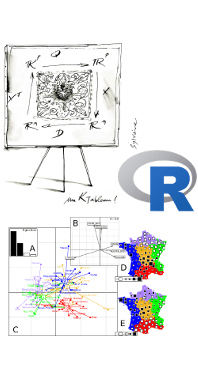
Statistical analysis of ecological data
Understanding the structure and dynamics of species assemblages, and the processes behind them, requires collecting data that are becoming increasingly complex owing to the sophisticated technological developments made available for their acquisition (e.g. GPS, loggers, satellite imagery, molecular data). We are developing new methods for analysing such data, that provide new insights into the ecological processes at work in communities. Multivariate analysis methods allow the analysis of spatial structures, accounting for various information on species (functional traits, morphology, phylogeny), the spatio-temporal variation of species-environment relationships or the multifaceted perception of the protected human-environment relationship. We also model multi-'omics' dose-response data within communities in order to better understand the Adverse Outcome Pathway (AOP) and to better appreciate the risks to the environment. These methodological innovations are made available to the scientific community through the development, distribution and maintenance of software (libraries for the R language: ade4, adegraphics, adephylo, ade4TkGUI, nlstools, fitdistrplus, DRomics, seqinr).
Involved group members: Marie Laure Delignette-Muller, Stéphane Dray*, Jean Lobry, Jean Thioulouse.
Publications
Display of 151 to 180 publications on 666 in total
Bias in presence-only niche models related to sampling effort and species niches: Lessons for background point selection
PLoS ONE . 15 ( 5 ) : e0232078
Journal article
see the publicationIs prediction of species richness from stacked species distribution models biased by habitat saturation?
Ecological Indicators . 111 : 105970
Journal article
see the publicationGrowth trajectories, better than organ-level functional traits, reveal intraspecific response to environmental variation
Peer Community In Ecology . : 100041
Other publication
see the publicationWhich traits make weeds more successful in maize crops? Insights from a three-decade monitoring in France
Plants . 9 ( 1 ) : 40
Journal article
see the publicationTRY plant trait database – enhanced coverage and open access
Global Change Biology . 26 ( 1 ) : 119-188
DOI: 10.1111/gcb.14904
Journal article
see the publicationAnalyzing snapshot diversity patterns with the Neutral Theory can show functional groups’ effects on community assembly
Ecology . 101 ( 4 ) : e02977
DOI: 10.1002/ecy.2977
Journal article
see the publicationExtinction–immigration dynamics lag behind environmental filtering in shaping the composition of tropical dry forests within a changing landscape
Ecography . 43 ( 6 ) : 869-881
DOI: 10.1111/ecog.04870
Journal article
see the publicationHow citizen scientists contribute to monitor protected areas thanks to automatic plant identification tools
Ecological Solutions and Evidence . 1 ( 2 )
Journal article
see the publicationResource manipulation through experimental defoliation has legacy effects on allocation to reproductive and vegetative organs in Quercus ilex
Annals of Botany . 126 ( 7 ) : 1165-1179
DOI: 10.1093/aob/mcaa137
Journal article
see the publicationHeterogeneity of water physico-chemical characteristics in artificially pumped waterholes: do African herbivores drink at the same locations and does it lead to interference competition?
Journal of Arid Environments . 173 : 104014
Journal article
see the publicationTrait-based ecological and eco-evolutionary theory
Theoretical Ecology . : 161-194
Book chapter
see the publicationA Speed-up Method for Numerical Simulations of Multi-strokes Cold Metallic Sheet Forming Processes
Procedia Manufacturing . 47 : 570 - 577
Journal article
see the publicationScarless Removal of Large Resistance Island AbaR Results in Antibiotic Susceptibility and Increased Natural Transformability in Acinetobacter baumannii
Antimicrobial Agents and Chemotherapy . 64 ( 10 ) : e00951
DOI: 10.1128/AAC.00951-20
Journal article
see the publicationA multi-omics concentration-response framework uncovers novel understanding of triclosan effects in the chlorophyte Scenedesmus vacuolatus
Journal of Hazardous Materials . 397 : 122727
Journal article
see the publicationSurface water quality assessment in a semiarid Mediterranean region (Medjerda, Northern Tunisia) using partial triadic analysis
Environmental Science and Pollution Research .
Journal article
see the publicationBacterial Transformation Buffers Environmental Fluctuations through the Reversible Integration of Mobile Genetic Elements
mBio . 11 ( 2 ) : e02443-19
Journal article
see the publicationHow does increasing mast seeding frequency affect population dynamics of seed consumers? Wild boar as a case study
Ecological Applications . : 1-11
DOI: 10.1002/eap.2134
Journal article
see the publicationDeep learning for species identification of modern and fossil rodent molars
Preprint
see the publicationDevelopmental variability channels mouse molar evolution
eLife .
DOI: 10.7554/eLife.50103
Journal article
see the publicationInvestigating microbial associations from sequencing survey data with co-correspondence analysis
Molecular Ecology Resources . 20 ( 2 ) : 468-480
Journal article
see the publicationCan an herbivore affect where a top predator kills its prey by modifying woody vegetation structure?
Oecologia . 192 ( 3 ) : 779-789
Journal article
see the publicationVaginal Tampon Colonization by Staphylococcus aureus in Healthy Women
Applied and Environmental Microbiology . 86 ( 18 ) : e01249-20
DOI: 10.1128/AEM.01249-20
Journal article
see the publicationEffect of interspecific competition on species sensitivity distribution models: Analysis of plant responses to chemical stress
Ecotoxicology and Environmental Safety . 200 : 110722
Journal article
see the publicationUtilisation de DRomics pour modéliser les données omiques de type dose-réponse dans le cadre de l’appréciation du risque environnemental
SEFA (Société d’Ecotoxicologie Fondamentale et Appliquée) .
Conference paper
see the publicationSome issues about the design of preclinical trials
Séminaire Celphedia (Création, ELevage, PHEnotypage, DIstribution et Archivage d'organismes modèles) .
Conference paper
see the publicationDRomics: an R tool for modelling omics dose-response data
Congrès useR! .
Poster
see the publicationComparison of the effect of alfaxalone VS medetomidine and ketamine for induction of anaesthesia in Trachemys scripta sp. undergoing sterilisation
Joint Leibniz-IZW/EAZWV/ECZM Zoo and Wildlife Health Conference .
Conference paper
see the publicationCombination of prior distributions elicited from expert opinions previous to Bayesian inference. Application to personalized medicine
Bayes 2019 (Bayesian Biostatistics conference) .
Conference paper
see the publicationRegional rainfall and local topography jointly drive tree community assembly in lowland tropical forests of New Caledonia
Journal of Vegetation Science . 30 ( 5 ) : 845-856
DOI: 10.1111/jvs.12781
Journal article
see the publicationPopulation dynamics in a structured habitat
Les Dossiers d'Agropolis International . 23 : 38-38
Journal article
see the publication
You also, comment on this article